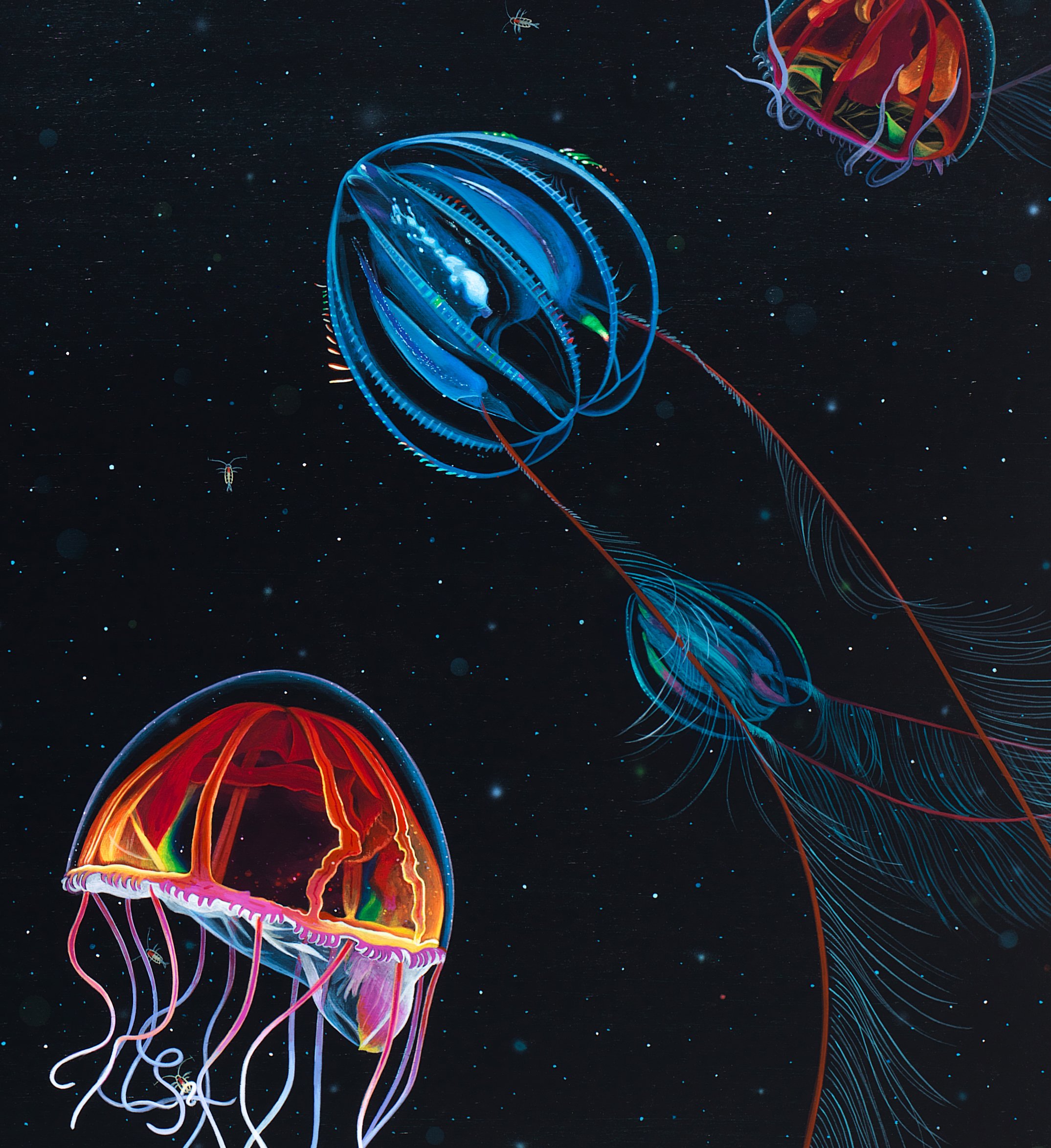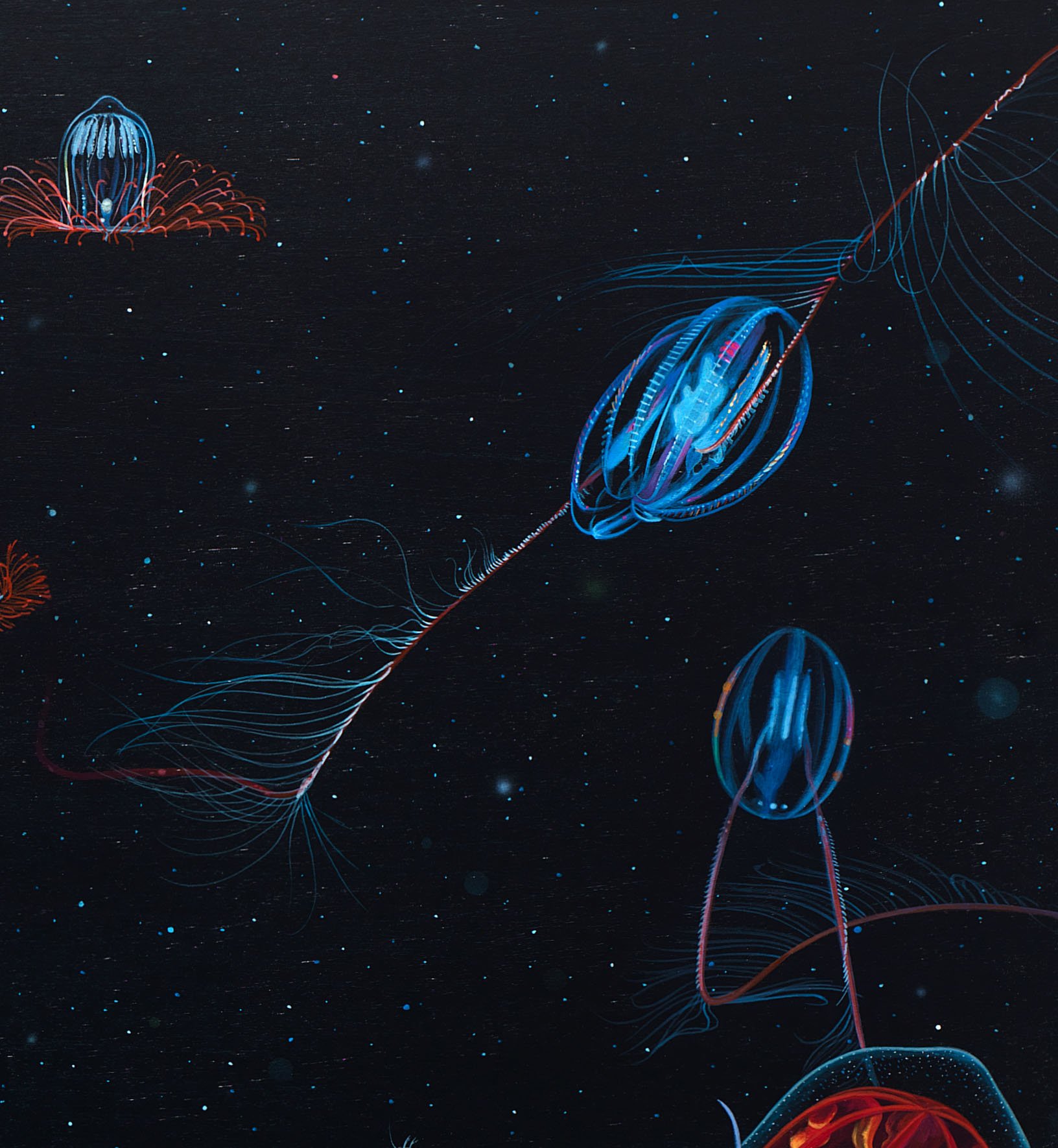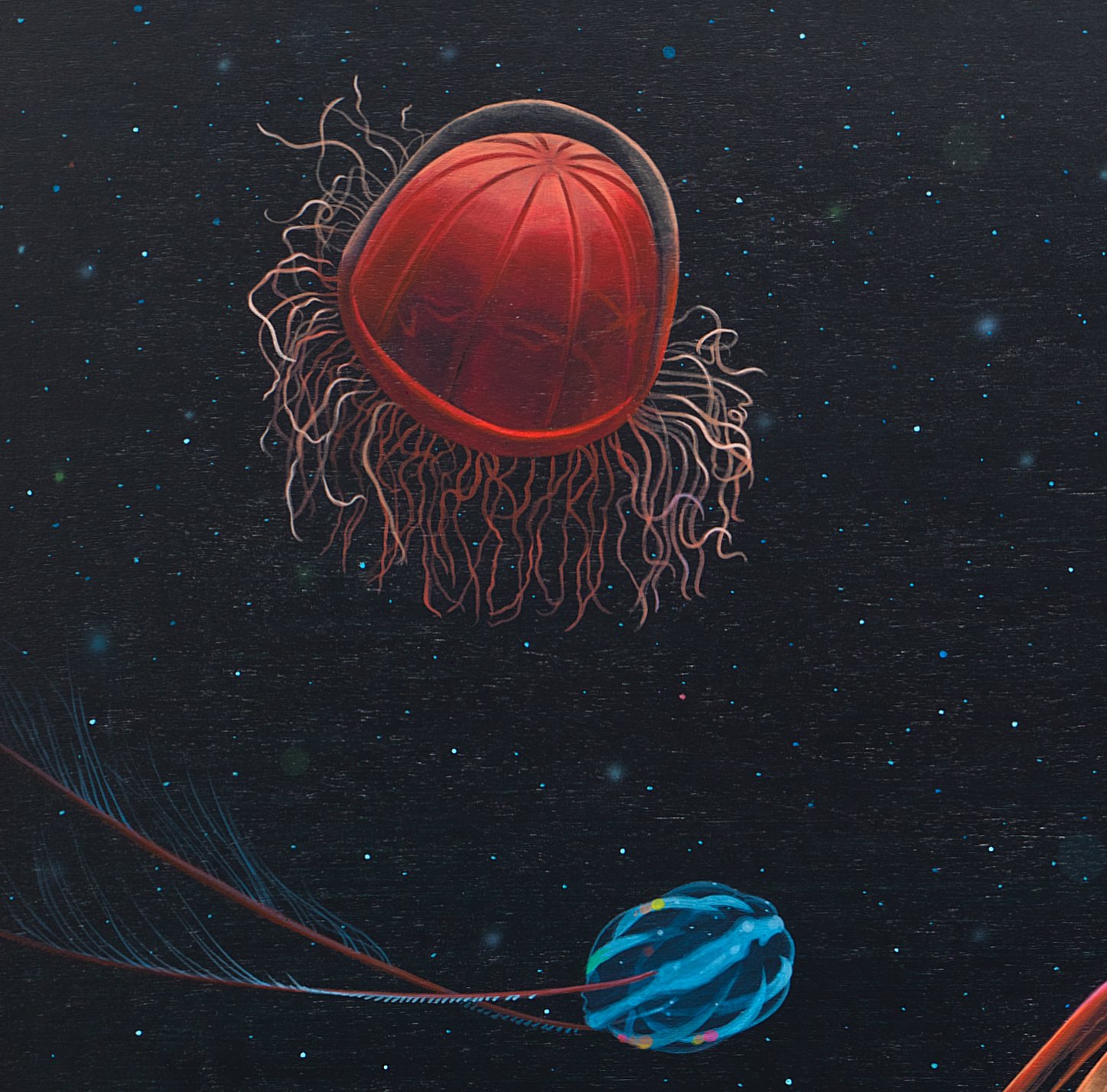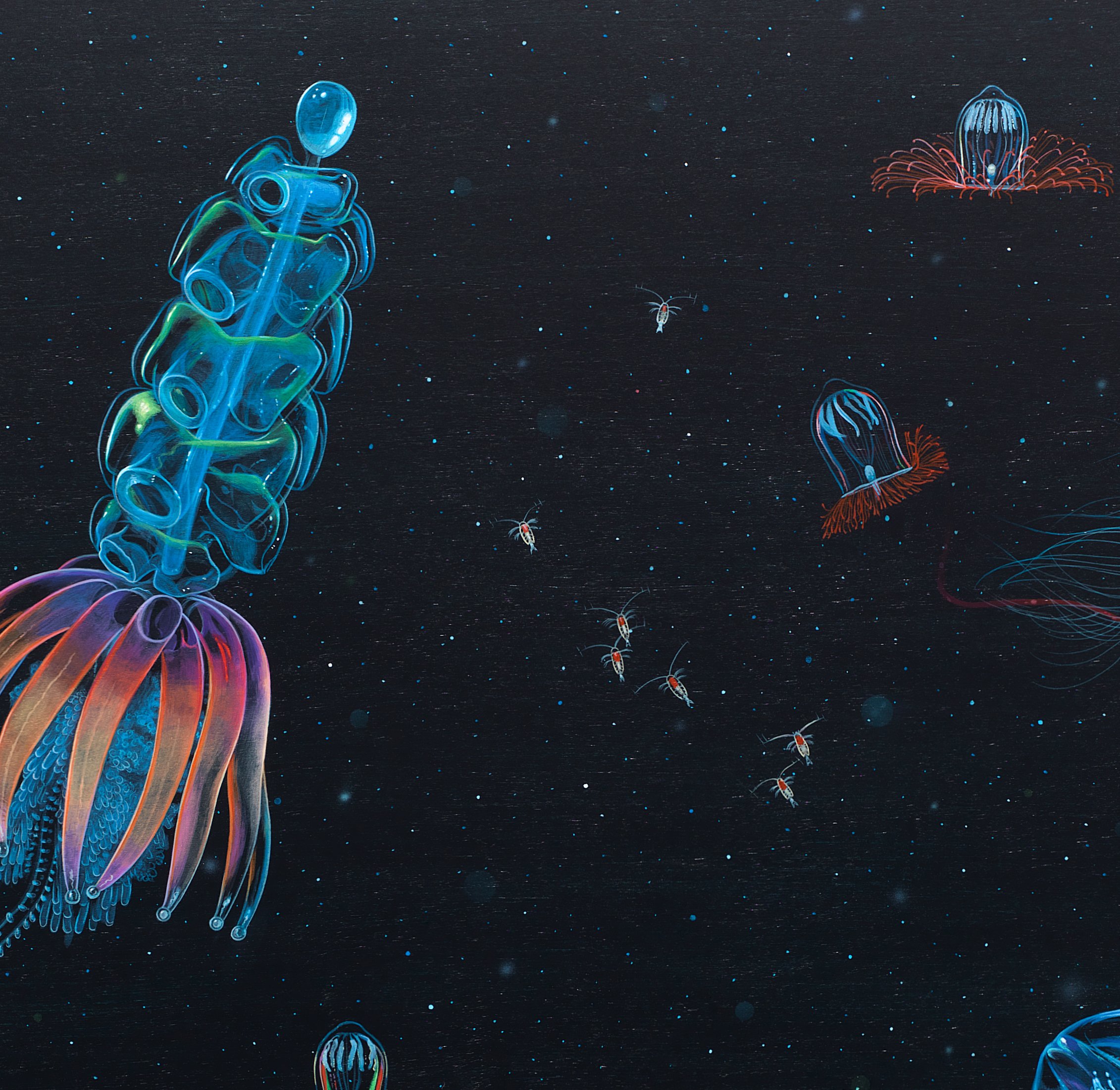Pulse, 31.5” acrylic on maple panel, 2019
Pulse, 31.5” acrylic on maple panel, 2019
Arctic Wonders Series (1/3) Zooplankton from the Arctic Ocean for a permanent ‘Change’ exhibit on Endurance National Geographic & Lindblad.
Pulsing ctenophores and siphonophores adapt in a rapidly changing Arctic sea to catch drifting zooplankton in their long tentacles. One of the most common jellyfish in the Arctic is the small bell shaped hydrozoan named Aglantha digitale (center top). Light refracts off the comb-rows of the ctenophore Mertensia ovum (bottom left) producing stripes of rainbow color. The Hula skirt siphonophore Physophora hydrostatica (top left) is a colonial animal, with powerful stinging tentacles that can grow up to 41 cm. Lastly, the deep Crossota norvegica (top left) and the very common Crossota millsea (lower right) are also known to frequent several localities in the Arctic.
Special thanks to National Geographic, Lindblad, and all the biologists who made this painting possible. Most of all, Steven Haddock and Wyatt Patry from the Monterey Bay Aquarium. Bart Shepard from the CA Academy of Sciences, and Alexander Semenov at Moscow State University’s White Sea Biological Station, and Charlotte Havermans from the Alfred Wegener Institute Helmholtz Centre for Polar and Marine Research.





